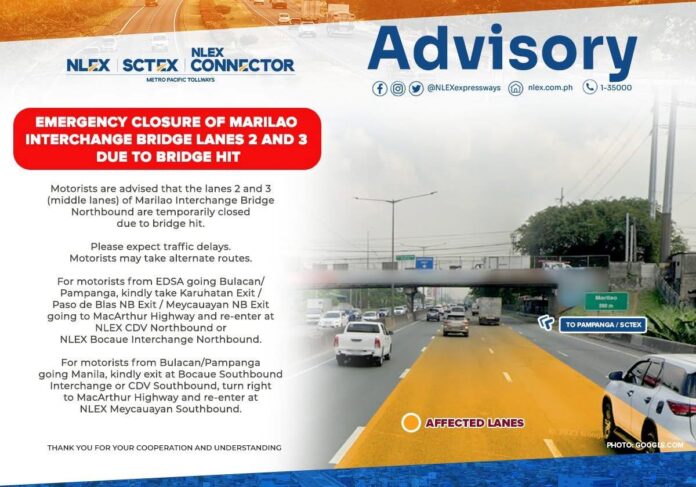The Toll Regulatory Board (TRB) has demanded an explanation from NLEX Corp. on why it should not face penalties following the 19 March incident in which an overheight truck collided with the Marilao Interchange Bridge, causing significant traffic disruption.
The incident, which occurred at the NLEX toll plaza, resulted in major congestion along the expressway. In response to the situation, Transport Secretary Vince Dizon ordered NLEX to open additional lanes and waive toll fees for motorists traveling between the Balintawak and Marilao sections of the highway.
Dizon said it was crucial for NLEX to provide relief for drivers, noting that it would be unfair to charge full toll fees to motorists who were stuck in traffic for hours despite only traveling short distances. “It would be doubly painful for motorists if they were charged the full toll while they were stuck in traffic for hours,” Dizon said. “This toll waiver is a small concession for the inconvenience suffered by motorists and passengers.”
In addition to the toll suspension, Dizon instructed NLEX to open extra lanes to ease congestion. NLEX responded by quickly opening one additional lane, bringing the total number of lanes to three, to facilitate smoother traffic flow.
Meanwhile, NLEX filed charges against the truck driver and its owner for reckless imprudence resulting in property damage. The Land Transportation Office (LTO) also issued a show-cause order to the truck company and driver.
Dizon assured the public that the Department of Transportation (DOTr) is working closely with NLEX to repair the damaged bridge as swiftly as possible, with an estimated completion time of less than two weeks.
“We are in close coordination with NLEX management, and we thank them for their urgent response to the incident,” Dizon stated. “We need to fix this quickly so that motorists and passengers are not stuck in traffic for hours,” he added, emphasizing President Marcos’ directive to prioritize the time of the people.
The regulatory implications of this incident could result in penalties for NLEX, and the heightened focus on traffic flow management demonstrates the government’s commitment to addressing infrastructure-related issues promptly.







